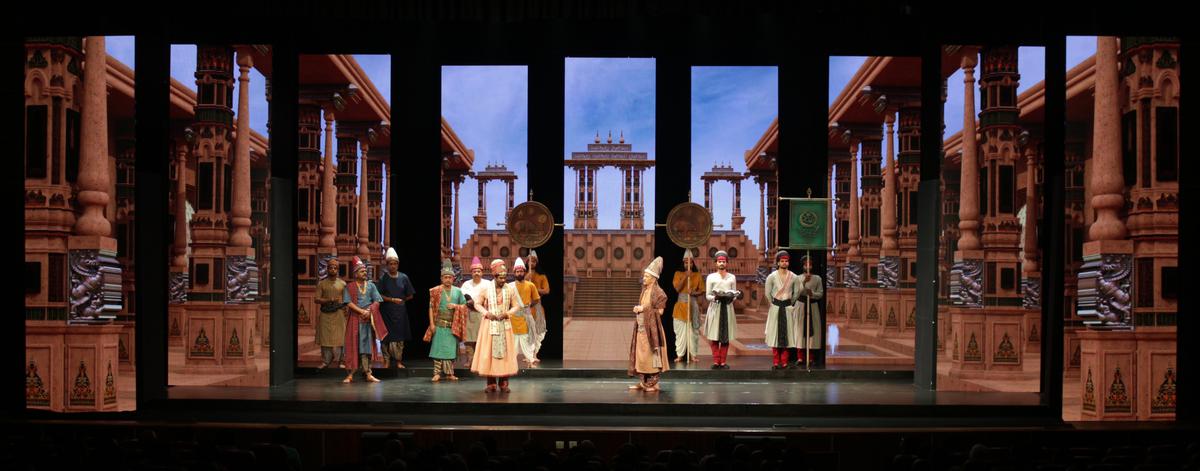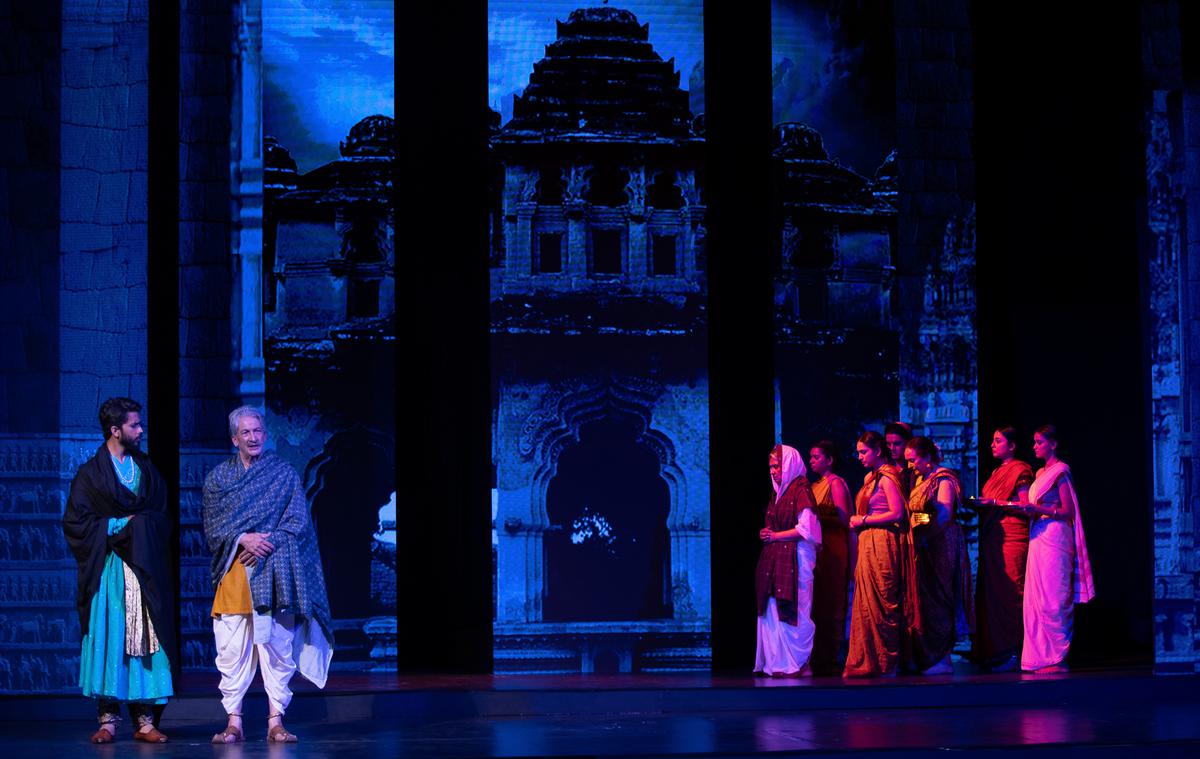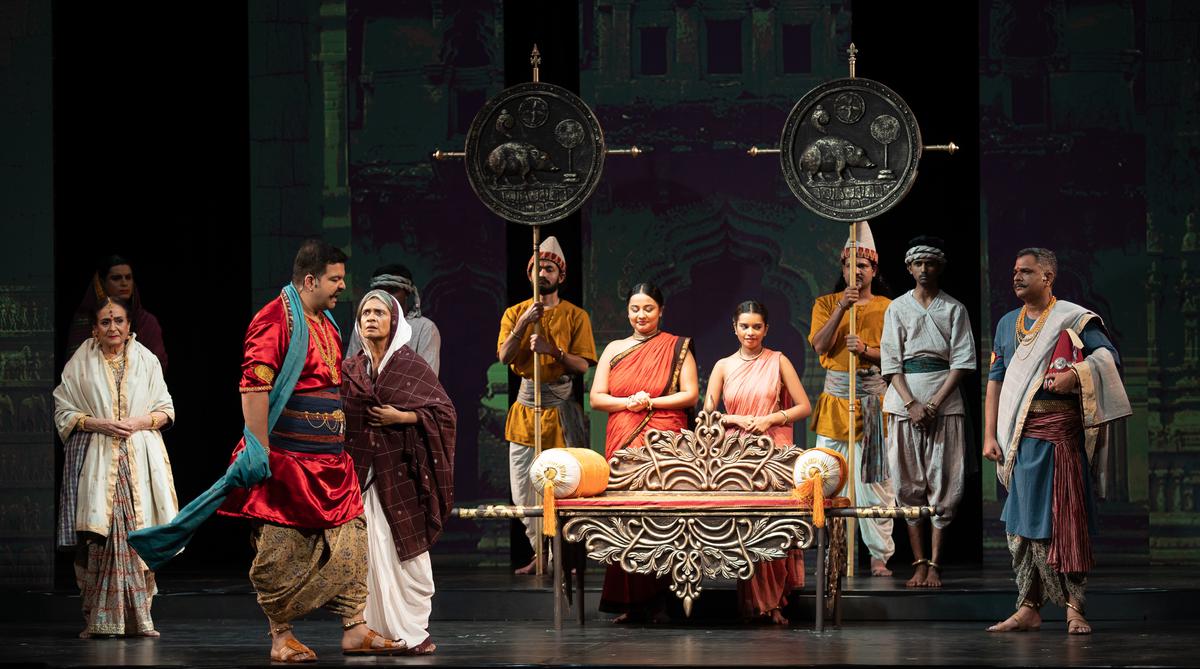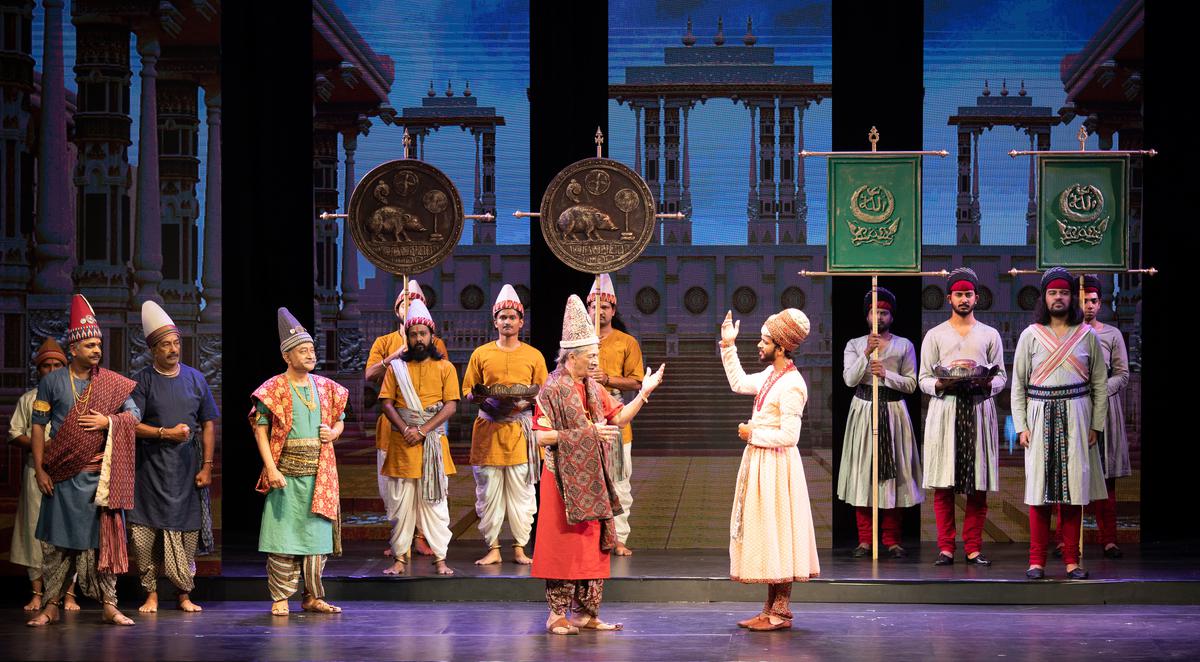A scene from Arjun Sajnani’s play, crossing the talikota, , Photo Credit: Saravan Acharya
Arjun Sajnani to produce Girish Karnad’s last play, Crossing to Talikota [staged in Bengaluru recently], was more show than substance, this was due to the lackluster script. Sajnani brings to the fore his decades of experience and exceptional production values. He doesn’t skimp on sets or costumes, and his attention to detail extends to his supporting cast, so that there’s never a missing weak link in his productions.
Karnad’s screenplay focuses on recording a historical watershed – the defeat and devastation of Vijayanagara – reducing the drama to a series of episodes, absorbing enough, but resulting in a choppy action narrative. The focus was also fragmented with multiple shifts of locations, although Sajnani handled these scenes very well, using slide projections to conjure up luxurious interiors or bleak battlefield camps.

A scene from Arjun Sajnani’s play, crossing the talikota, , Photo Credit: Saravan Acharya
Karnad is fond of large historical canvases but, unlike Tughlaq, for example, Talikota has no central character to bind us. The dramatic tension of a play usually stems from the crisis of the protagonist: Thomas More’s soul-searching, Beckett’s conflict with King Henry II, Oedipus helplessly caught in a fateful web… There is no ego in Talikota. Nor does it develop issues of moral import showing the tragic fragility of the human condition.
Multiple characters of almost equal importance left no scope for the actors to play their unfinished roles. The characters faced only fundamental crises; Without any meaningful introspection or dramatic conflict arising from difficult choices, the actors had little to work with.

A scene from Arjun Sajnani’s play, crossing the talikota, , Photo Credit: Saravan Acharya
Keeping in mind the sympathy of the audience, the personal and political dilemmas of ‘Alia’ Ramaraya could have been the crux of the drama. The low-born son-in-law, promoted by marriage, is humiliated as a second-class citizen in traditional Hindu society. Ramaraya’s driving ambition to legitimately re-establish his welfare legacy was the potential for engrossing drama. Ashok Mandanna’s dry delivery and expression suits the bitterness of unfulfilled ambition. He was rightly asserted as the de facto ruler of a glorious empire, juggling various factions to maintain power. The screenplay suggests that Ramaraya’s sudden vertigo had disturbing consequences, but the acting does not adequately reveal these attacks.
convincing illustration
Mahir Mohiuddin as Adil Shah moved convincingly between a Farzan’s loving subservience to Ramaraya and duplicity as a key player in the Sultanate faction. Again, he was given a pun to express his anguish at being forced to betray his word of honor given to Ramaraya.

A scene from Arjun Sajnani’s play, crossing the talikota, , Photo Credit: Saravan Acharya
Veena Sajnani always struts her stuff on stage with clear delivery and proper emotion. She was convincing as a tolerant wife of a low caste husband. Here again was the original dramatic friction: Satyabhama is torn between devotion to her husband and loyalty to her father, whom Ramaraya abuses in moments of desperation.
Vivek Shah has an impressive stage presence and fits easily into his roles, but, as Nizam Shah, the delivery and movements were parsimonious, the panache and gestures overdone. If Susan George was excellent as his Begum, it was also because her character had more scope. Her brilliant performance communicated her understanding of the role of Begum with facial expressions, gestures and nuanced delivery not found in the rest of the cast.

a scene from the play crossing the talikota, , Photo Credit: Saravan Acharya
Sajnani paces up the proceedings by portraying the puppet king as a petulant poufy brat. Ironically, this idiosyncratic Sadasiva claimed the play’s only poignant scene: allowed a rare audience with the elderly Tirumalamba, his pitiful pleas describing his 20 years of imprisonment and impotence as a dominant ruler:” I am in a parrot’s cage… leave alone walking outside without permission to peep, talk to anyone, not even a beggar…”.
The production did its best with vernacular language and other shortcomings inherent in the script, but a parade of historical characters and events, a spectacle of action, significant peaks remained lacking. The spectators remained spectators without their own feelings or deep sensibilities.
Karnad could have developed the talikota of the play’s title into an important allegory, such as the famous Rubicon: it could have implied the characters at a critical point, synonymous with a temporal crossroads. Instead, a point remains, a historical footnote on the Talikota map.